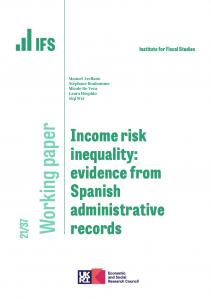Working Paper
We propose a method to correct for sample selection in quantile regression models. Selection is modelled via the cumulative distribution function, or copula, of the percentile error in the outcome equation and the error in the participation decision. Copula parameters are estimated by minimizing a method-of-moments criterion. Given these parameter estimates, the percentile levels of the outcome are re-adjusted to correct for selection, and quantile parameters are estimated by minimizing a rotated “check” function. We apply the method to correct wage percentiles for selection into employment, using data for the UK for the period 1978-2000. We also extend the method to account for the presence of equilibrium effects when performing counterfactual exercises.







































